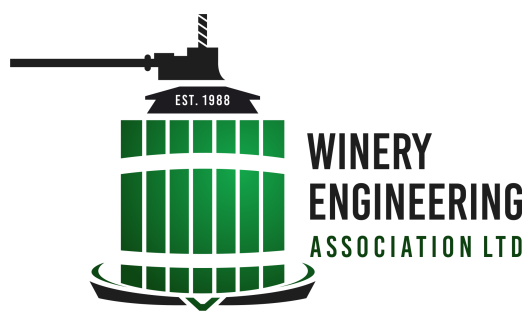
Philip Gregan
CEO – New Zealand Winegrowers
Topic
About
Presentation
It is important to analyse what the required refrigeration capacity is under peak load conditions and low load conditions, as the most suitable system will depend on what is required in both scenarios. Selection criteria such as size, energy efficiency, location of the plant and maintenance requirements should all be looked at when selecting refrigeration equipment. Certain types of systems will be more suitable then others depending on the weight the winery puts on specific selection criteria.
We will present some typical winery examples and discuss the pros and cons of each type of system.

Adam Walker
Director & Senior Structural Engineer – Structex
Topic
About
Presentation
It is important to analyse what the required refrigeration capacity is under peak load conditions and low load conditions, as the most suitable system will depend on what is required in both scenarios. Selection criteria such as size, energy efficiency, location of the plant and maintenance requirements should all be looked at when selecting refrigeration equipment. Certain types of systems will be more suitable then others depending on the weight the winery puts on specific selection criteria.
We will present some typical winery examples and discuss the pros and cons of each type of system.

Ragan Wood
Systems Sales Specialist – F&B – Pall Corporation
Topic
About
Presentation
Peter has used this method on multiple occasions and has acted as a neutral resource with a set of fresh eyes on many occasions to assist businesses problem solve difficult and recurring complex problems that were costing them money, lost time, safety and quality issues.
Using a structured approach to problem solving can not only solve problems but can help identify potential problems in other areas. After this talk, you’ll have a simple tool you can use to get on top of those pesky problems that cost your company money and you your sanity!

Paul Mooney
Winemaker
Topic
About
Presentation

Peter Maunder
Managing Director – Improvement Direct
Topic
About
He can be reached at peter@idirect.co.nz
Website: www.idirect.co.nz
Presentation

Dr Paul Bowyer
Group Oenologist/Regional Manager S.A – Blue H2O Filtration
Topic
About
Presentation

Nathan Clarke
Principal Wastewater Engineer – Beca – NZ
Topic
About
Presentation
While wine barrels remain an essential component in premium winemaking, these days the sheer size of some blends means the oak needs to be delivered and integrated in different formats.
With a track record as a sustainable raw material, oak is set to remain a vital tool for winemakers. Today’s cooperages are well equipped to meet the winemaker’s requirements.

Matt Morris
Project Manager – Apex Environmental
Topic
About
Presentation

James Balzary
Founder and CEO, Ailytic
Topic
About
- CEO of Ailytic
- Previously Director Software – Schneider Electric and Global Sales Director – SolveIT Software
James is currently CEO of Ailytic Pty Ltd, an Australian based decision analytics software company focussed on enabling manufacturers to compete on a global scale utilising predictive analytics, artificial intelligence optimisation and cloud platforms. James’ background couples strategic management and technical expertise in global software technology environments with an operational background. Proven in management, strategy, operations transformation, technical consulting, business development, marketing, sales and product strategy, growth initiatives and channel/partner management. James has spent the last 12 years in enterprise software environments across a broad range of industries and geographies and currently works with many of Australia’s leading wine companies. James holds a Bachelor of Science with First Class Honours from James Cook University, North Queensland
Presentation

Will Lomax
Managing Director – Onguard Group
Topic
About
Presentation

Jose Miguel Amorim
Production Manager - Amorim
Topic
About
Presentation

Dr Mostafa Nayyerloo
Senior Risk Consultant - Aon

Chris Standing
Risk Engineer – Aon
Topic
About
Topic
About

David Gill
Managing Director – Wine Technology Marlborough
Topic
About
The first version of VinWizard as a computer-based temperature control system utilising SCADA technology was written in that year.
As David’s knowledge of the industry grew, SCADA and off the shelf technology became too limiting so David learnt to program using his electrical knowledge and modern code-based computer languages to write a system designed specifically for the industry. VinWizard has evolved under David’s stewardship over 23 years to be the flagship of Wintec’s range of products designed specifically for the wine industry.
Presentation

Kai Kang
Solutions Architect – Rockwell Automation
Topic
About
Presentation

Shayne Murphy
CEO - Hawke’s Bay Refrigeration (2005) Ltd
Topic
About
Presentation
In this presentation Shayne will cover the following: – • Take a practical look at the changing Refrigerants of Today from a Contractors view point. • Give an overview of Natural Refrigerants, Synthetic Refrigerants and the impact of Carbon Tax including the Impact of these on Capital Equipment and Servicing of current equipment. • Highlight how Energy Efficiency and Insulation are also important factors within industry. • Give practical Information on the benefits of Nexus Insulation in the winery.
- Take a practical look at the changing Refrigerants of Today from a Contractors view point.
- Give an overview of Natural Refrigerants, Synthetic Refrigerants and the impact of Carbon Tax including the Impact of these on Capital Equipment and Servicing of current equipment.
- Highlight how Energy Efficiency and Insulation are also important factors within industry.
- Give practical Information on the benefits of Nexus Insulation in the winery.

Derek Liddington
General Manager – Onguard Group
